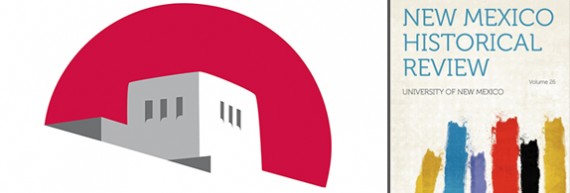For the past 87 years, centuries of Southwestern history has been documented in one of New Mexico’s most prominent journals, the New Mexico Historical Review.
The NMHR, a scholarly journal that covers Southwestern and New Mexico history, originated in Santa Fe in 1926 and has been published quarterly ever since. Lansing Bloom founded the NMHR with the help of former editor of the Old Santa Fe magazine, Ralph Twitchell, the Historical Society of New Mexico, and Edgar L. Hewett from the School of American Research.
NMHR Editor Durwood Ball said the review is one of the most distinguished scholarly journals for Southwestern culture and history, and that the state of New Mexico is an essential part of the Southwest.
“The NMHR kind of became the journal of record for the Historical Society of New Mexico,” he said. “…In many ways, New Mexico is the heartland because the Spaniard settlers settled here in 1598, pueblos have been here centuries longer and the Rio Grande is such an important lifeline for anyone living in this region.”
Ball said that for decades the NMHR has published works from some of the most important Southwestern historians and that article topics range from Spanish colonization to the present.
“These are articles that are really scholarly in nature. Historians research in primary documents, whether they’re Spanish documents or the journals and diaries of Spanish and Mexican settlers, official government reports and documents, statistics, or census bureau data,” he said. “Each article is supposed to make a contribution to the field.”
Ball said one volume in particular, New Mexico Historical Review Volume 87, Number 1, focused on photography to tell New Mexico’s history. He said two of the entries in particular, New Mexico’s New Communal Settlers and From Innocence to Experience, discuss one of his favorite eras – 1960’s and 70’s counterculture.
According to New Mexico’s New Communal Settlers author, Timothy Miller, in the 1960’s and 70’s, communes erupted throughout New Mexico, particularly in northern New Mexico. The author explains that new communitarians found Native American spirituality to be profound and appreciated the way Native Americans lived harmoniously with nature. But some communes, such as the Family and a community outpost, El Rito, practiced more stereotypical ideologies of the counterculture, such as free love, open sexuality and using LSD.
From Innocence to Experience is a photographical account of New Mexico communes. Photographer Irwin Klein spent the late 1960’s to the early 1970’s documenting hippie communes in New Mexico, creating a record of what he called the “new settlers” of New Mexico. Klein wanted to capture the newcomer’s appreciation for Pueblo and Navajo culture and their effort to unite Americans with those cultures.
The counterculture movement in New Mexico rebelled against industrialized and mechanized America, and opted for a life that focused on nature rather than technology. Throughout the 1960’s and 70’s a number of communes opened and closed throughout New Mexico; some communes still exist, such as Lama and the Guru Ram Das Ashram.
Ball said the NMHR covers a series of topics relevant to Southwestern culture and history, documenting events from colonization to 21st century New Mexico.
“You really do see sort of 400 years of history in the Southwest and some of the articles even deal with the prehistoric archaeology of the region,” he said. “You see how the field of history itself…the social, cultural, intellectual history of historical practice…you can see that change throughout the review.”
Ball said one of the most fascinating aspects of the review is the diversity in stories found in Southwestern history, but that he’d like to see more research on modern Southwestern history and culture.
“Since 1926 you see a history of doing history over 80 years,” he said. “It’s really one of the Grandes Dames of the academic publishing world.”




Responses to “Scholarly Journal Standout”